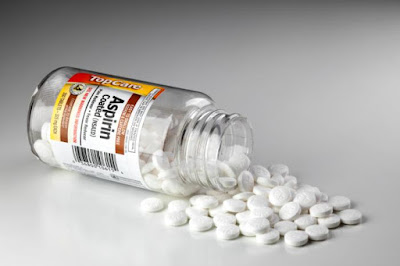Aspirin, a non-sterodal anti-inflammatory
drug (NSAID), is used in the treatment of mild to moderate pain,
inflammation, and fever.
It is also used as an antiplatelet agent to
prevent myocardial infarction, stroke and transient ischemic episodes.
The reason behind why it acts as antithrombotic at
small dose and analgesic at high dose is due to its pharmacokinetic profile.
The mechanism behind its analgesic,
anti-inflammatory and antipyretic action is inhibition of Prostaglandin (PG)
synthesis via inhibiting Cyclooxygenase (COX) enzyme.
Aspirin inhibits COX irreversibly by
acetylating one of its serine residues; return of COX activity depends on
synthesis of fresh enzyme.
Aspirin also inhibits synthesis of both
proaggregatory (TXA2) and antiaggregatory (PGI2) prostanoids, but effect on platelet
TXA2 (COX-1 generated) predominates.
Aspirin is highly active; acetylates platelet
COX irreversibly in the portal circulation before it is deacetylated by first
pass metabolism in liver.
Hence when aspirin is given orally, it will remain
unionized in stomach at acidic pH, and absorbed.
The absorbed aspirin will bind to platelet COX enzyme and
inhibit the synthesis of Thromboxane A2 before reaching to liver for first-pass
metabolism.
The analgesic action is produced after its first-pass
metabolism in liver (Due to first-pass metabolism some amount of drug is metabolized
hence less amount of drug is available in circulation).
Small doses are therefore able to exert
antithrombotic effect for several days.






No comments:
Post a Comment